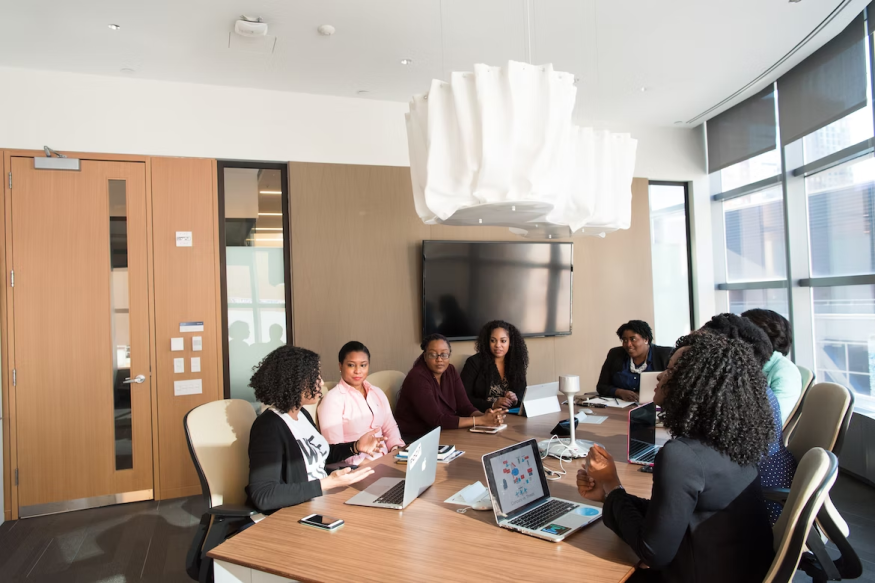
User interviews are an essential part of any UX design project. They help you understand the user's needs and wants, their motivations and frustrations, as well as how they interact with your product. But conducting effective user interviews is not always easy - it requires skill and practice to get right.
Are you considering conducting user interviews for your upcoming UX design project? Then this blog post is exactly what you need! We'll cover the importance of user interviews, how to effectively prepare for them, which questions are most important to ask during an interview session and strategies on making participants feel as comfortable as possible. By following these steps meticulously, rest assured that you will get meaningful insights from each interviewee which will prove invaluable in creating a product experience tailored specifically to meet users' needs. So let's start by diving right into it!
1. Define Your Goals for the Interviews
Designing a successful UX project necessitates obtaining user feedback, making conducting interviews a must. To ensure that you get the maximum amount of applicable information from each interview, it is paramount to formulate and set goals prior to beginning an interview session. Doing this will assist in focusing and framing your questions so as to acquire useful insights pertinent to your design project while also allowing you time management capabilities - granting you enough time with each respondent. By taking these steps, not only are you ensuring success for yourself but for all stakeholders involved!
Benefits of conducting user interviews
Conducting user interviews is an integral step in the UX design process, offering numerous benefits that contribute to the success of your project. By engaging with your target audience, you gain valuable insights into their needs, preferences, and pain points, which enable you to design a tailored user experience that caters to their expectations. Not only does this enhance your product's usability, but it also fosters customer satisfaction and long-term loyalty. Moreover, user interviews help identify any areas of resistance or misunderstanding, equipping you with the knowledge to address and overcome potential obstacles before they become stumbling blocks for your users. Ultimately, incorporating user interviews in your UX design project paves the way for more effective problem-solving and innovation, ensuring a seamless and gratifying user journey.
2. Identify and Reach Out to Potential Participants
When identifying potential UX project participants, one may have the option of drawing from their internal network or hiring UX services to assist. Regardless, it is important to be conscious of who is included in the interviews; diverse perspectives and opinions often yield unique insights. For example, interviewing an employee at a venue that specializes in UX services may provide a greater opportunity to evaluate UX design holistically. Furthermore, seeking out reliable references and making direct contact with those involved can help ensure a successful UX interview process. By understanding participant roles prior to the interview, UX designers can better leverage user data for their projects.
3. Prepare Questions That Will Help You Gain Insightful Insights
Preparing effective questions for user interviews is key when it comes to gaining the deepest insights into a UX design project. It's important that these questions are reflective of the goal and objective of the project, as they should be designed to reveal the motivations, preferences, and behaviors that inform users' engagement with your product or service. When creating questions, consider focusing on topics such as user pain points and understanding of usage and behavior. Additionally, don't forget to include at least one open-ended question in order to give users an opportunity to provide detailed feedback. Doing so will maximize the value you can gain from each interview, unlocking untapped potential and uncovering insight that can be transformed into tangible design solutions.
4. Create an Environment That Is Conducive to Open Conversation
Gaining a thorough understanding of your UX design project requires asking the right questions during user interviews. Your inquiries should be tailored to uncover users' motivations, preferences, and behaviors that shape their engagement with your product or service - all while staying true to the goal and objective of the project. Some areas you may want to focus on when creating these questions include: what user pain points they experience; how they use and interact with the product/service; plus any other useful information related to their usage habits. Moreover, always make sure to include an open-ended question that gives users the chance to express their thoughts more fully. This will maximize the potential you can gain from each interview and reveal insights that can be transformed into real design solutions. Taking this step will unlock a whole new world of possibility!
Record the Interviews to Capture All of the Details
To make sure that you capture all of the details from your user interviews, it is recommended that you record each interaction. Recording your interviews not only ensures accuracy but also serves as valuable feedback for you and the team to reference during the design process. When capturing each interview, be sure to summarize key points, both in written form or audio/visual form if possible, so everyone involved has a clear understanding of how best to approach the project's design strategy.
5. Analyze Data Collected From User Interviews
After the user interviews have been conducted, the next step for effective UX design is to analyze the data collected from them. This crucial step of understanding the information gathered from these conversations allows designers to identify patterns, hidden trends and flaws that may have previously gone unnoticed. It is important to treat the collected data as a puzzle, breaking it down into individual components in order to better understand what kind of valuable insights can be extracted from them. Analyzing these findings will provide an organized understanding of users' behaviors and preferences that can be used for making informed design decisions going forward. By making sure each piece of information collected is thoroughly analyzed, designers are more likely to uncover key insights that will lead to successful UX solutions.

6. Use Results To Refine Your UX Design Project
After conducting user interviews, it is essential to use the results to refine your UX design project. Analyze their responses and look for patterns; participants' reactions can provide valuable input which can help refine your project's approach. Ask yourself if there are ways you could re-scale or modify features, interactions, etc., as well as brainstorm any further elements you may consider introducing. Additionally, pay close attention to User Experience (UX) pitfalls that have been identified--use this data to minimize or eradicate problems ahead of time. Keep communication open with users throughout the development process through surveys and updates--this will ensure they are engaged and their feedback will become more efficient. Finally, once a prototype is released you should observe users' reactions to fine-tune it before deployment. Using results properly is crucial for the successful completion of a UX design project.
Final Words
Crafting top-notch user experience (UX) is indispensable for any successful product or service. Utilize the guidance provided in this article to run user interviews effectively and efficiently, while deriving maximum value from them for your project. From crafting questions that reflect the goal of your UX project to recording conversations for accuracy to analyzing data collected from participants' responses-each step contributes towards a more comprehensive understanding of how users interact with your product or service. Ultimately, it's up to you as a designer to use results properly and refine your UX design strategy accordingly in order to create solutions that meet everyone's needs and expectations. With these practices firmly in place, you will be well on your way toward creating exceptional user experiences every time!
© 2025 ScienceTimes.com All rights reserved. Do not reproduce without permission. The window to the world of Science Times.












